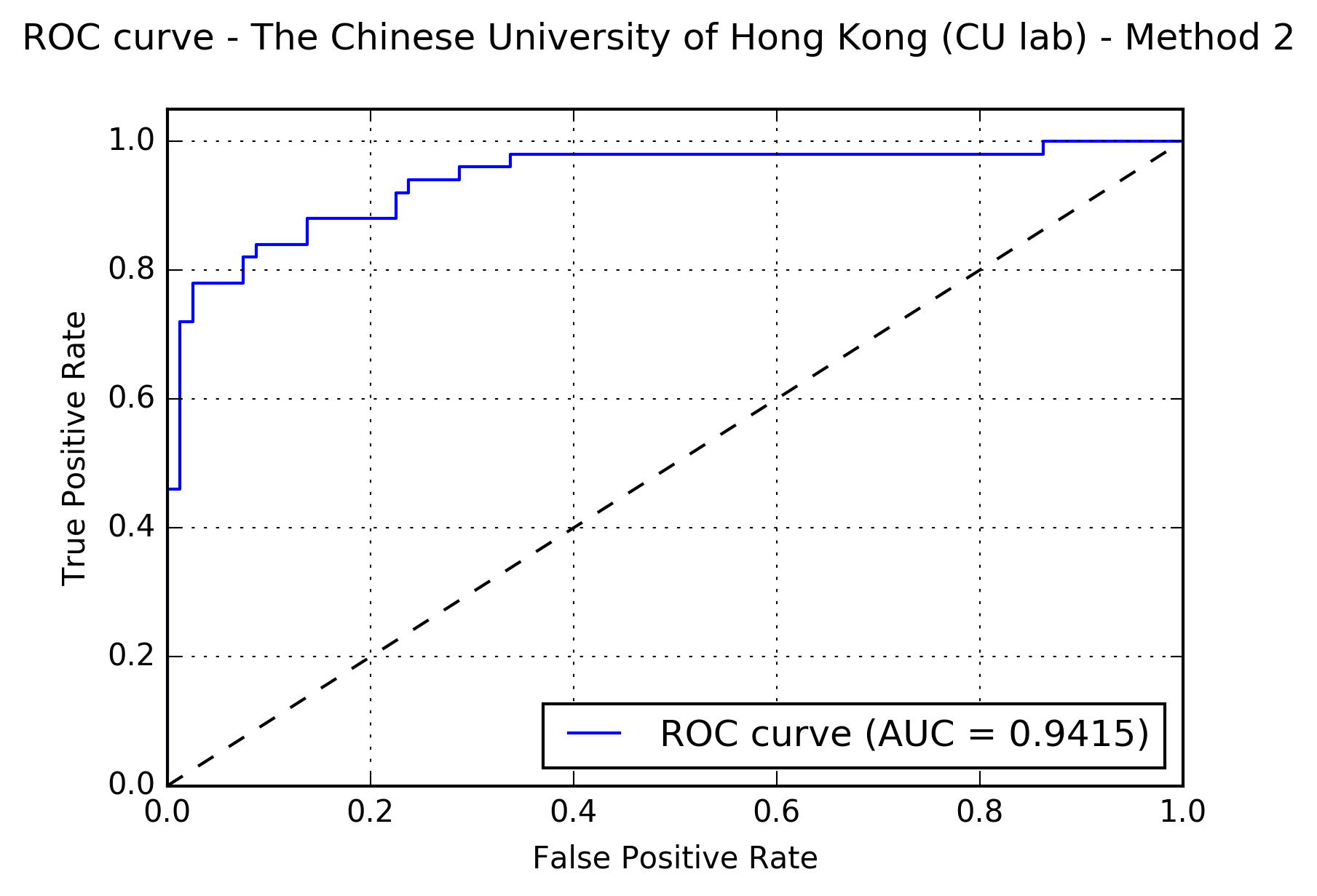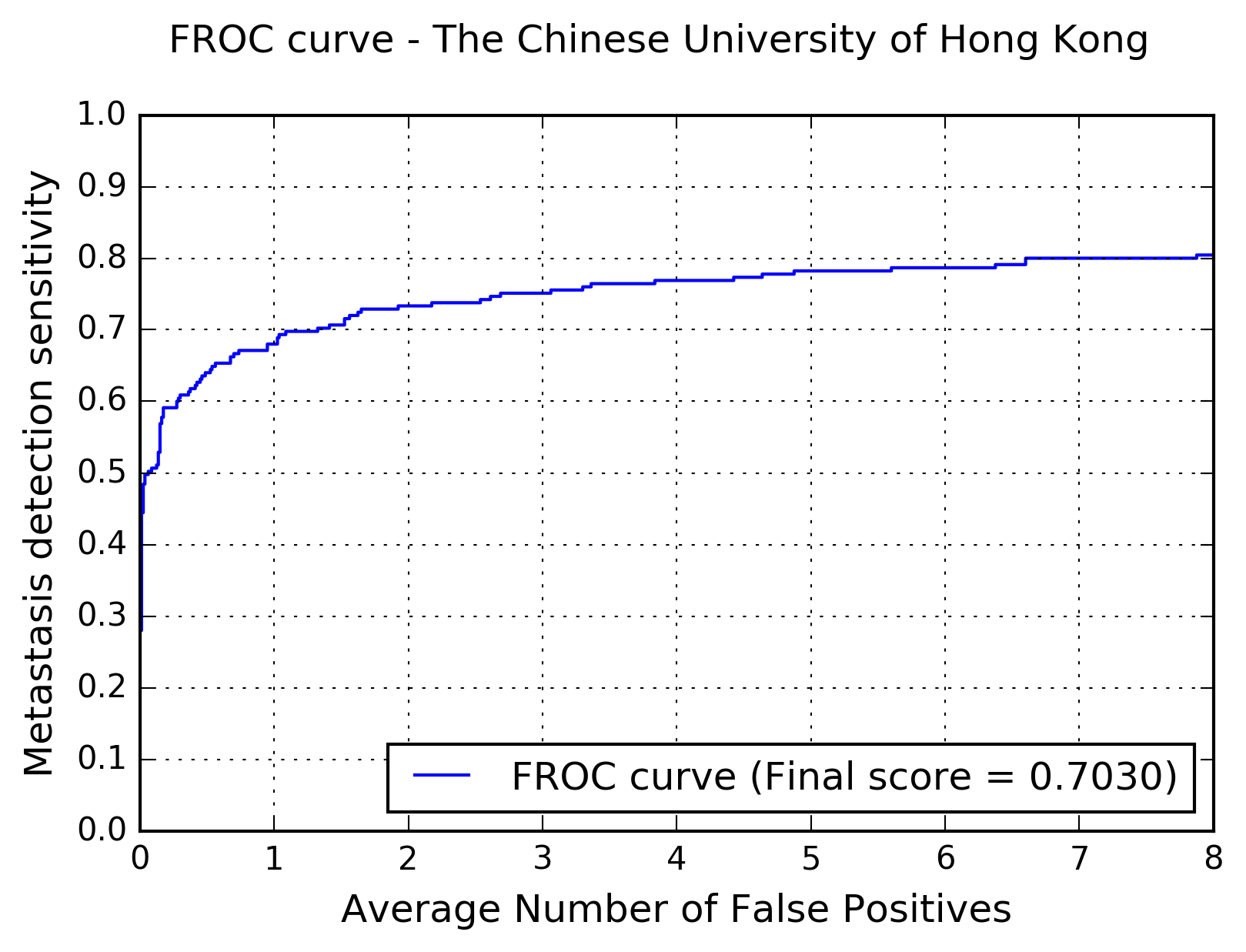Department of Computer Science and Engineering, The Chinese University of Hong Kong, Sha Tin, Hong Kong
Authors:Hao Chen, Huang-Jing Lin, Qi Dou, and Pheng-Ann Heng
Abstract:We utilized the fully convolutional networks, which can achieve dense predictions while removing redundant computations. We used the pre-trained VGG-16 net for initializing our fully convolutional network. To avoid the over-fitting issue during the training, we extracted the patches randomly from the WSI to augment our training dataset. In order to save the drive memory, this extraction step was done on-the-fly. In addition, a Producer-Customer framework and paralleled data access techniques were developed in the training process to alleviate the burden of IO operation. The post-processing step includes outlier suppression and metastasis localization. To suppress the outliers, we utilized a median filter to remove the potential outliers. Finally, the metastases were localized in the centroids of connected components on the mask after thresholding. The WSI classification results were simply generated based on the location results by selecting the maximum value of whole metastasis probability map.
Results:The following figure shows the receiver operating characteristic (ROC) curve of the method.

The following figure shows the free-response receiver operating characteristic (FROC) curve of the method.

The table below presents the average sensitivity of the developed system at 6 predefined false positive rates: 1/4, 1/2, 1, 2, 4, and 8 FPs per whole slide image.
| FPs/WSI | 1/4 | 1/2 | 1 | 2 | 4 | 8 |
| Sensitivity | 0.591 | 0.640 | 0.680 | 0.733 | 0.769 | 0.804 |
